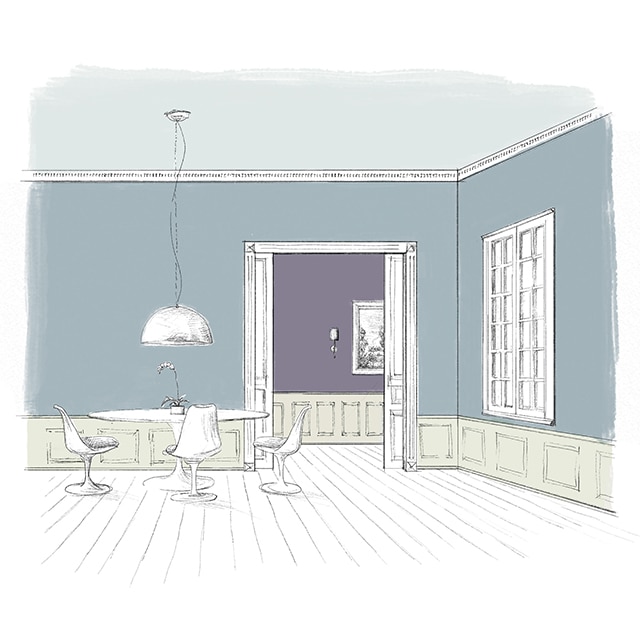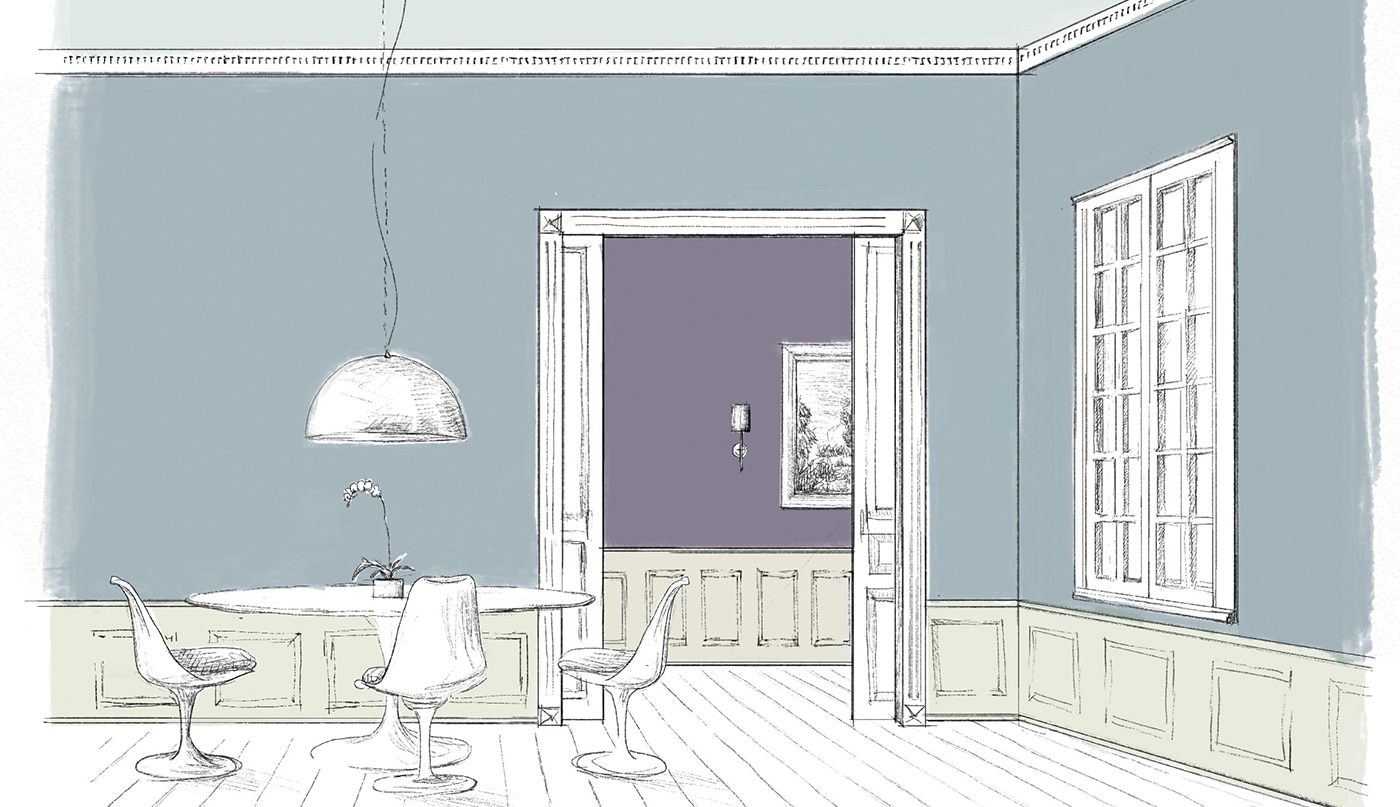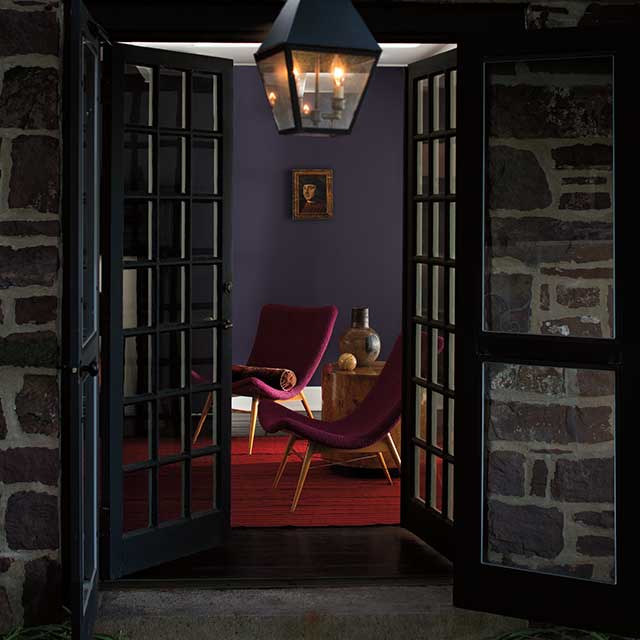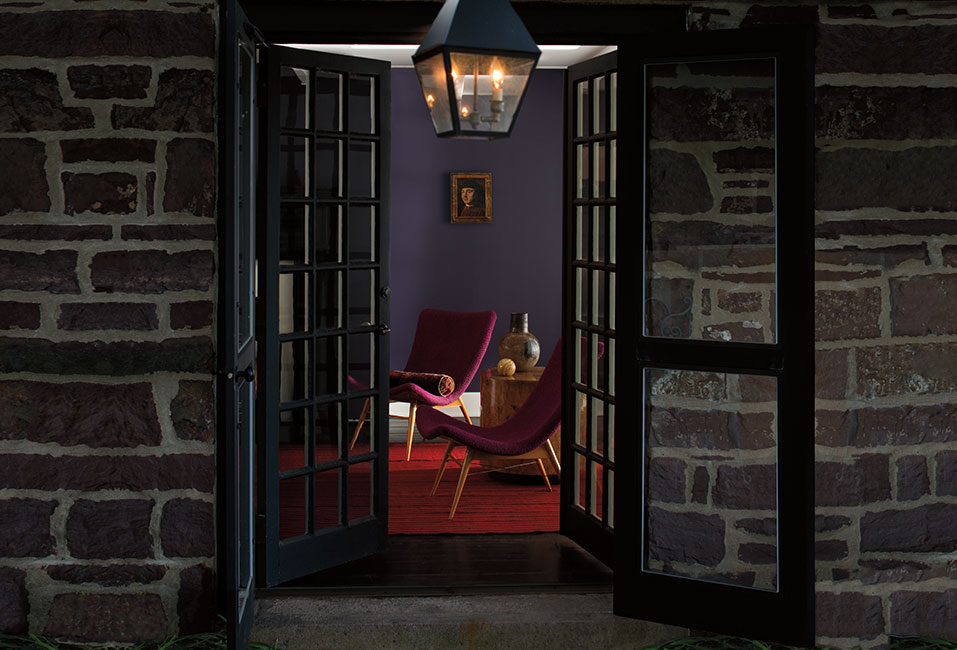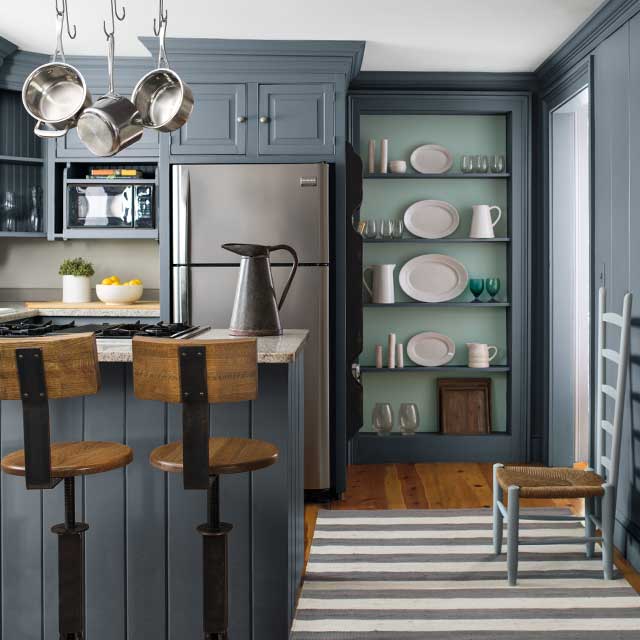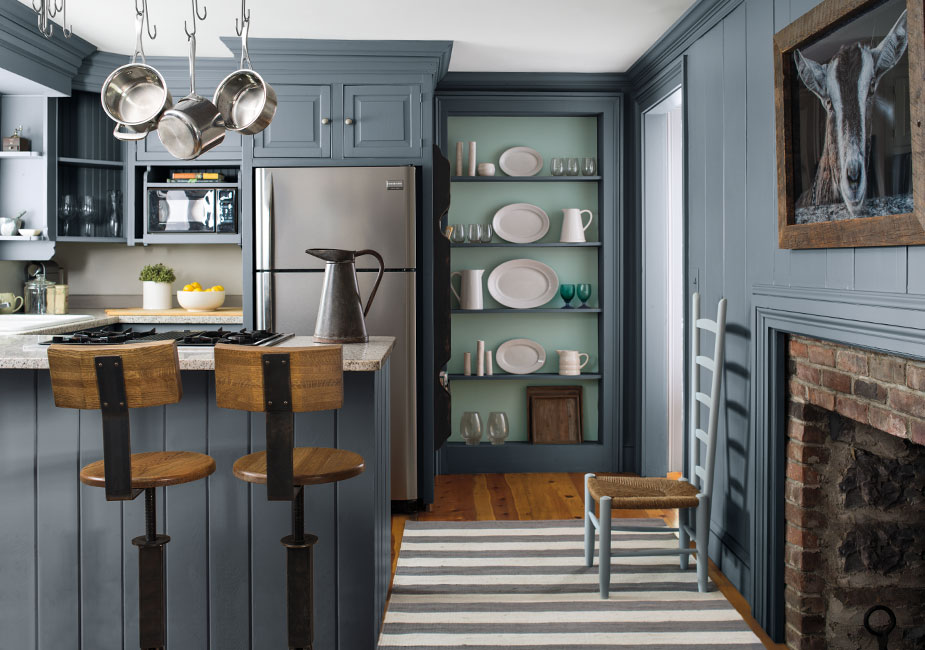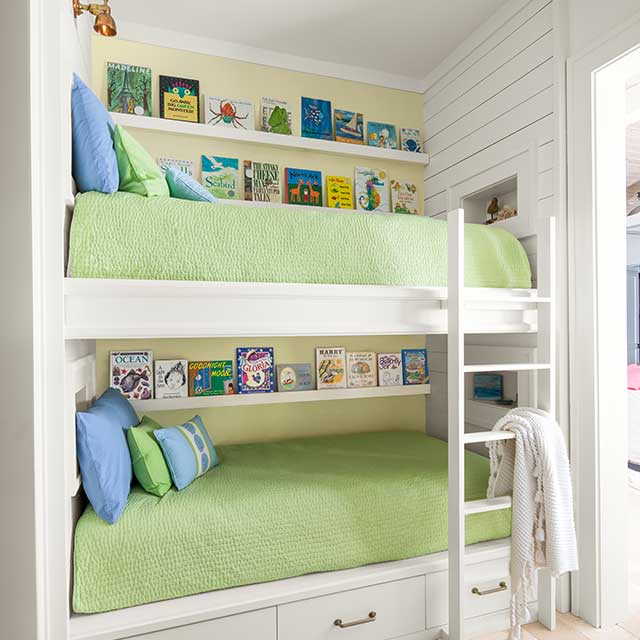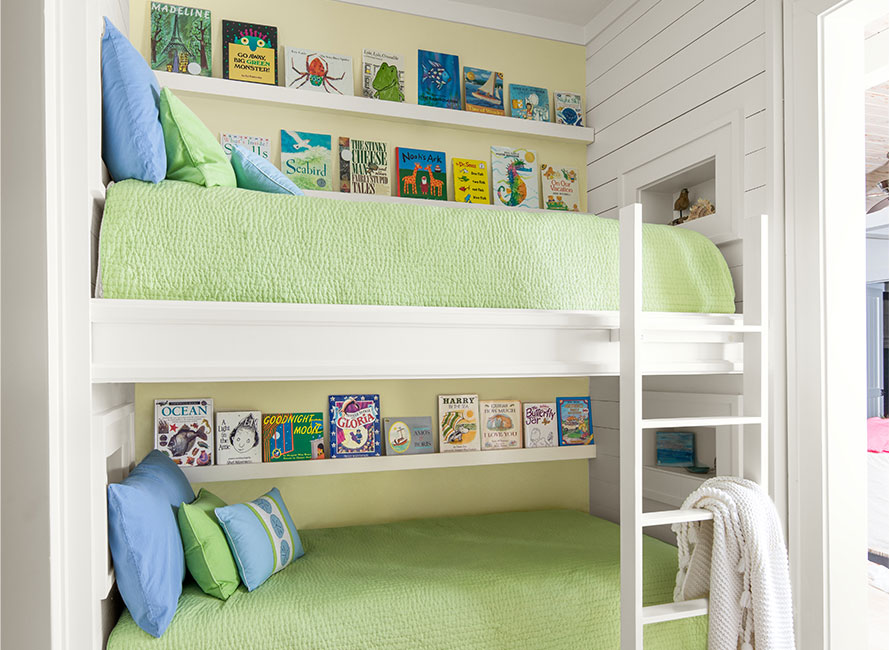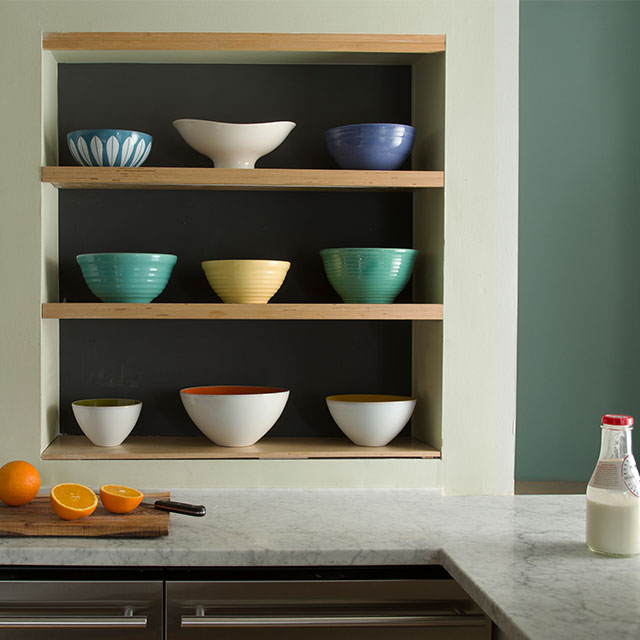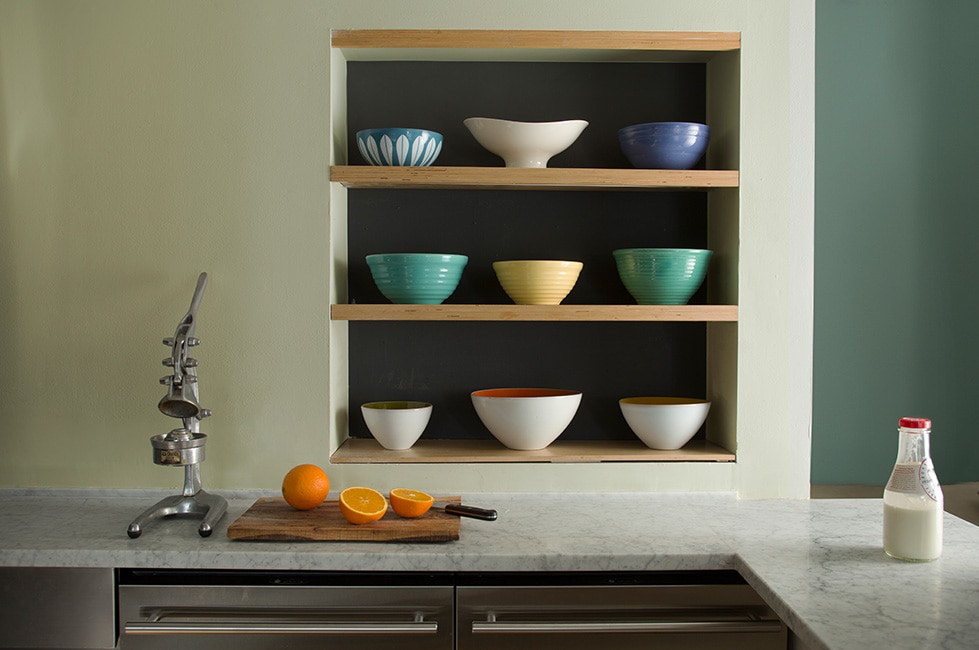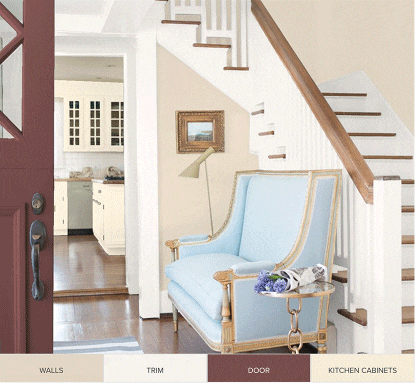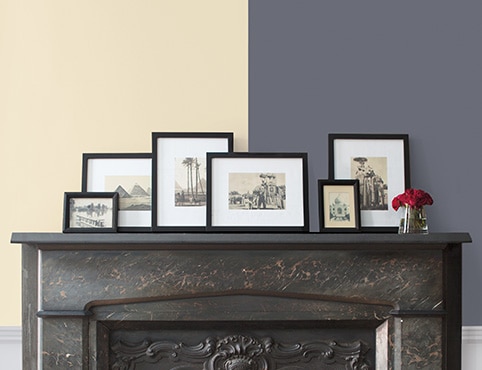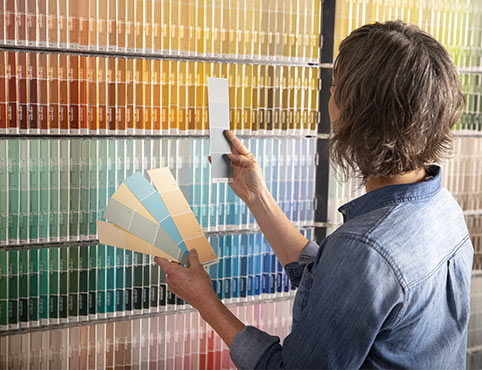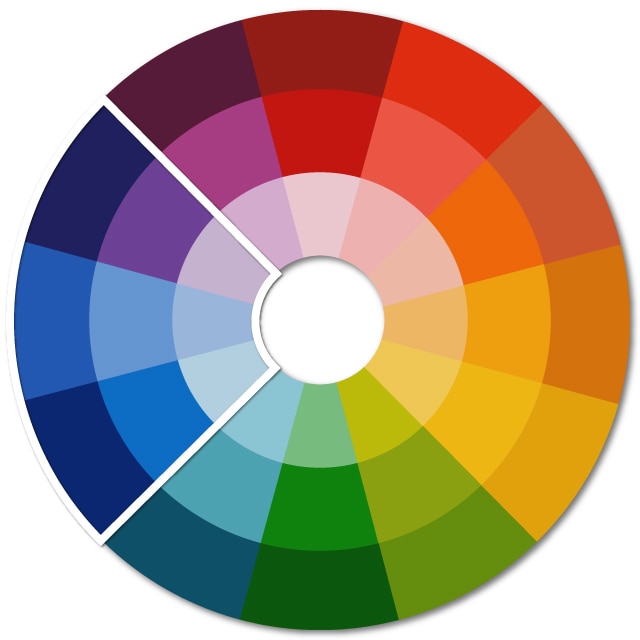
Analogous Colors 101
What is an analogous color scheme? The simple answer is that analogous hues are three color families that are adjacent to each other on the color wheel.Taking a closer look, an analogous color scheme combines a primary color, a secondary color and a tertiary color:
- Primary colors: Red, blue and yellow—the primary source of all colors
- Secondary colors:
- red+blue=purple
- red+yellow=orange
- yellow+blue=green
- Tertiary colors: These are a mix of primary and secondary colors: red-orange, yellow-orange, yellow-green, blue-green, blue-violet, red-violet.
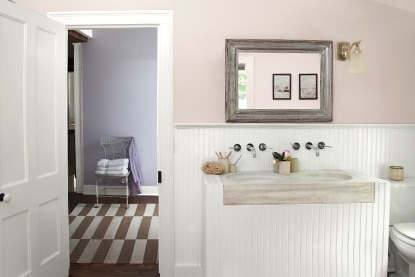
Analogous Color Scheme & Color Flow
An analogous color scheme can be used to create an interconnected color story in any room.Think how soft blues, greens and purples might evoke the feeling of a dusky, misty meadow. Or pale yellows, oranges and reds might conjure the sunrise of a new-day.
Here, a pastel color scheme creates harmonious color flow from bathroom to hallway. “Antique Pearl 2113-70, is a soft, airy lilac that tends toward a neutral and has a hint of red-violet undertone,” explains Hannah Yeo, Manager of Color Marketing & Development at Benjamin Moore. “This subtle red-violet undertone creates a seamless transition into the violet hallway, painted in Lavender Mist 2070-60.”
